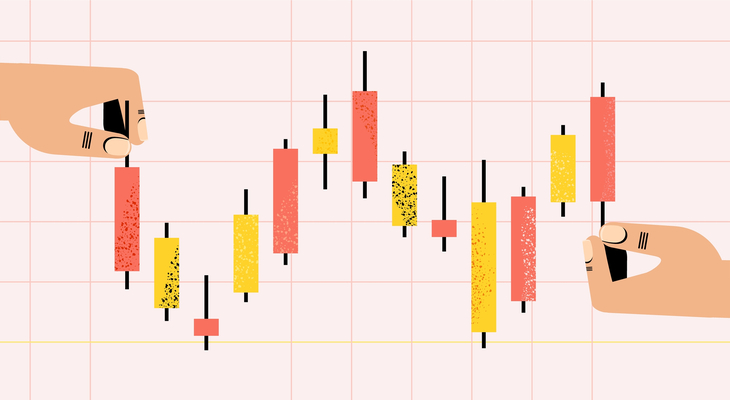 Neither “Safe” nor “Simple,” these Simple Agreements for Future Equity are convertible debt instruments that are often misunderstood and hard to value.
Neither “Safe” nor “Simple,” these Simple Agreements for Future Equity are convertible debt instruments that are often misunderstood and hard to value.
The SAFEs’ original purpose was to provide short-term bridge financing ahead of the next equity round. Soon, SAFEs started to replace traditional equity rounds while compounding the complexities of their economic terms. Merely focusing on discounts or valuation caps became grossly inadequate for both investors and issuers.
Valuation analysis provides a useful framework for working with SAFEs throughout their entire lifecycle, from the term sheet to settlement. It allows a holistic view of all the provisions and detailed conversion mechanisms. The process is full of surprises.
High-Level View
Each SAFE is a group of debt instruments (Subnotes), each corresponding to an exit scenario such as the next financing round or change of control. Each Subnote is either a convertible note or a plain debt instrument. The convertible note can be divided into a plain debt instrument and a stock option.
At the high level, valuation involves the following steps:
- Dividing a SAFE into Subnotes,
- Understanding payout mathematics for each Subnote,
- Calculating the fair value of each Subnote,
- Probability weighing each Subnote.
This approach is commonly referred to as the Probability Weighted Expected Return Method (PWERM). We will discuss each step below.
Exit Scenarios (aka Subnotes)
At the core of each SAFE is a set of exit scenarios. Valued as a Subnote, each scenario is an opportunity to convert the note into equity or cash out. They include:
- Next round of financing (NRF),
- Change of control (CoC),
- Maturity, or
- Elections made by an issuer or an investor (Other).
NRF is the primary focus of SAFE agreements. It specifies how equity will be obtained, but it can also create the greatest complexity. The conversion discount or valuation cap provisions are meant to provide investors with an investment return. However, the holding period, shadow stock provisions, or the type of conversion securities may negate or even guarantee a negative return on investment.
We wrote about shadow stock and how prominent law firms misunderstand the financial aspect of these provisions.
CoC provisions specify what happens when the issuer is acquired. They often guarantee a fixed cash premium to the investor. CoC provisions can incorporate a conversion at a fixed price, which acts as another equity option. These scenarios are typically less complex, but sometimes strangely absent from SAFEs.
Maturity provisions call for a repayment of interest and principal. The calculation is straightforward, as it illustrates the inadequacy of the nominal interest rate. More sophisticated notes include the ability to convert the note into existing equity without waiting for the NRF.
Finally, SAFE agreements may specify other scenarios in which a conversion or other changes to the agreement will take place at the election of an investor or an issuer. It is important to analyze these provisions since they are rarely low-probability events.
The SAFE assumption matrix is outlined below. It is the basis for the PWERM valuation.
| Scenario (Subnote) | NFR | CoC | Maturity | Other |
| Probability | 50% | 10% | 30% | 10% |
| Term | 1 year | 2 years | 1 year | 2 years |
Valuing Subnotes
The first step in valuing each Subnote is calculating the accrued principal and interest at each expected exit point (Balance). For example, if NFR is expected in one year, a 5% interest on a $1,000 principal will generate a $1,050 balance, which will be the basis for further calculations.
The second step is converting the Balance into the value of the conversion shares or cash. Below are a few possibilities, listed in order of increasing complexity.
- The Balance converts into shares of NFR equity at a discount. For example, a 20% discount will entitle an investor to new equity valued at $1,200 ($1,050 / (1 – 20%)) upon conversion. Note that we don’t need to know the NFR valuation to calculate the payout value.
- The Balance converts into shares of new equity at i) a discount or ii) based on a valuation cap. NFR valuation will dictate which option is more favorable to an investor. Both discounts and valuation cap provisions work by setting a conversion price, the lower the better. Because of this contingency, the valuation quickly escalates from a simple formula above to an option pricing method.
- The Balance converts into shares that are NOT NFR shares. The conversion can create new shares with reduced liquidation preference (aka shadow preferred) or use different types of shares, e.g. common stock. These provisions significantly reduce the value of the payout since such shares are commonly less valuable than those issued in the NFR. Strict modeling will require a combination of numerical simulations, e.g., Monte Carlo, and close-form option pricing models. However, shortcuts are available.
The third step is calculating the present value of future payments. Once condensed into a single value, future payments are reduced with a discount rate. The discount rate is commonly determined by normalizing the entire SAFE model to produce its principal amount at the time of issue.
Equity Value
The SAFE valuation often requires business valuation as of the valuation date. Intuitively, a $100M valuation cap feature can be valuable when a company is a unicorn or be worthless for a pre-revenue SaaS startup. Mathematically, total equity value sets the current values of securities involved in the conversion and are inputs in options pricing models.
Certain SAFE features such as interest rate, simple conversion discount, or CoC premium do not require current equity value. However, valuation caps or more complex conversion mechanisms will require total equity value as an input.
Conclusion
SAFE valuation is often an exit scenario analysis. The value of each exit (Sub Note) is estimated based on the economic features provided in the agreement and the company’s total equity value. The weighted average of these values is the value of the SAFE.
While investors focus on “landing” on the cap table, the value of that future equity they receive (or the issuer gives up) should be the focus of the analysis. It is entirely possible to have a SAFE that eliminates any opportunity for the upside on a portfolio level. Likewise, SAFEs offer important opportunities to minimize the dilution to the issuer.
In summary, DON’T sign any SAFE agreements without having a finance professional run a few detailed exit scenarios.


